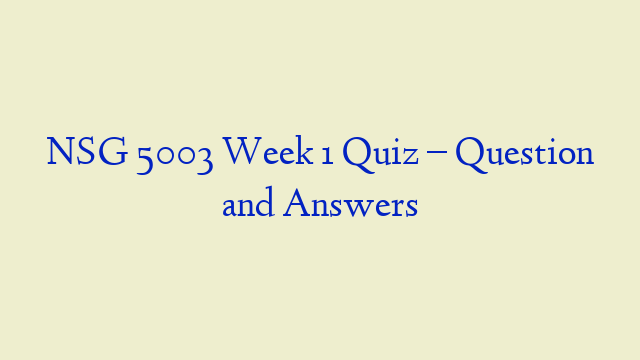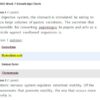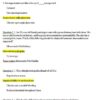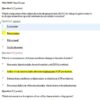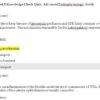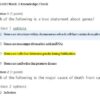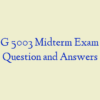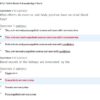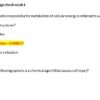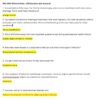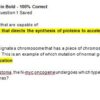Description
NSG 5003 Week 1 Quiz
- What is the sequence of steps in the development of a digestive enzyme by the pancreas cells from the initial transcription to the release from the cells?
- Which organic compounds facilitate transportation across the cell membrane by acting as receptors, transport channels for electrolytes, and enzymes to drive active pumps?
- Understanding the various steps of proteolytic cascades, such as caspase-mediated apoptosis and complement cascades, may be useful in designing drug therapy for which human diseases?
- Which structure prevents water-soluble molecules from entering cells across the plasma membrane?
- Which form of cell communication is used to communicate within the cell itself and with other cells in direct physical contact?
- Which mode of chemical signaling uses blood to transport communication to cells some distance away?
- Which mode of chemical signaling uses local chemical mediators that are quickly taken up, destroyed, or immobilized?
- How do cells receive communication from the ECF surrounding them?
- Under anaerobic conditions, which process provides energy for the cell?
- What is the mechanism by which the energy produced from carbohydrates, proteins, and lipids is transferred to ATP?
- Passive transport is best described by which statement?
- Active transport occurs across which type of membranes?
- Why is osmolality preferred over osmolarity as the measurement of osmotic activity in the clinical assessment of individuals?
- Why is it possible for potassium to diffuse easily into and out of cells?
- What causes a rapid change in the resting membrane potential to initiate an action potential?
- The action of the platelet-derived growth factor is to stimulate the production of which cells?
- What is a consequence of leakage of lysosomal enzymes during chemical injury?
- During cell injury caused by hypoxia, an increase in the osmotic pressure occurs within the cell because:
- Which statement is true regarding the difference between a subdural hematoma and an epidural hematoma?
- During cell injury caused by hypoxia, sodium and water move into the cell because:
